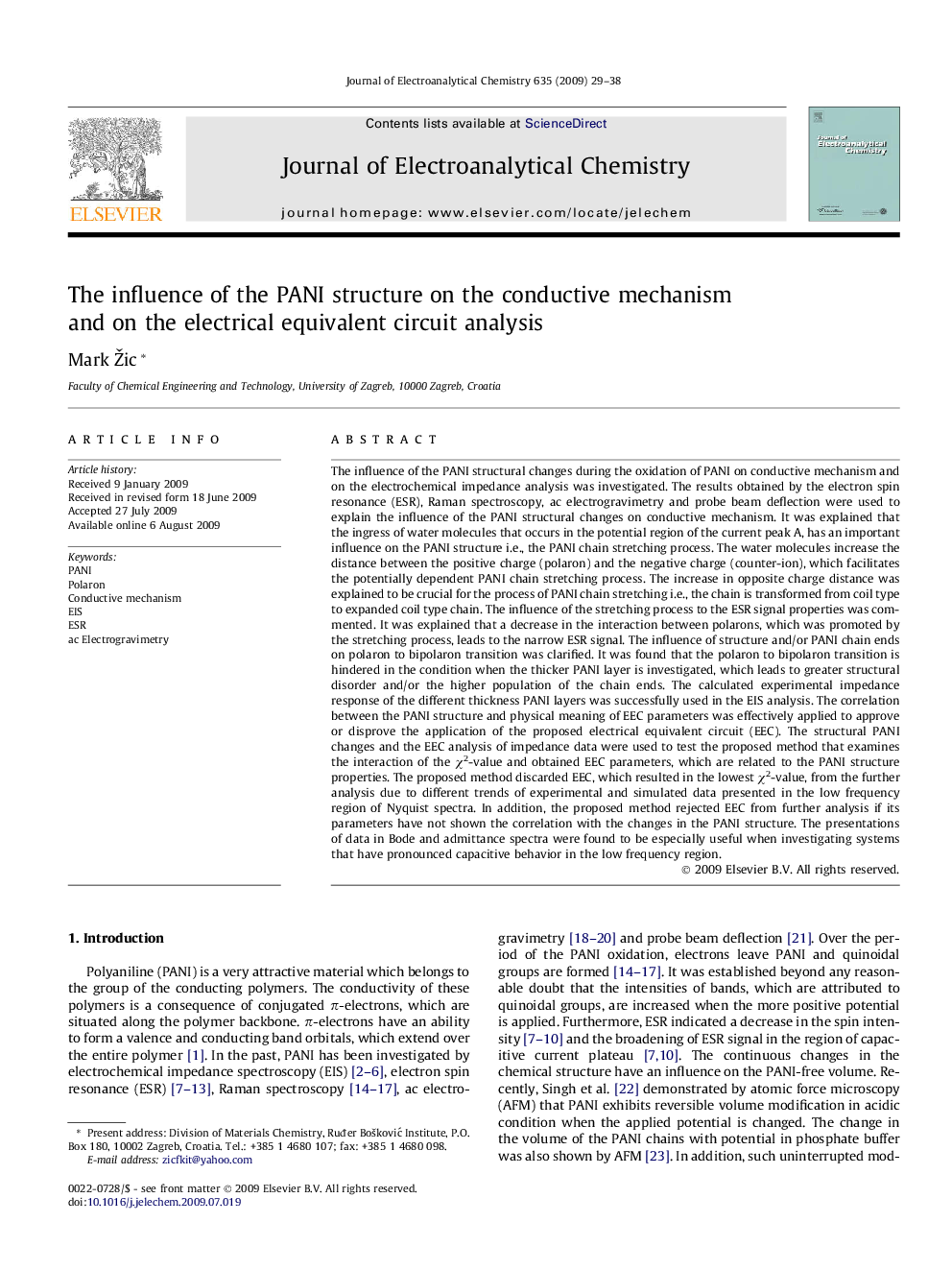| Article ID | Journal | Published Year | Pages | File Type |
|---|---|---|---|---|
| 220173 | Journal of Electroanalytical Chemistry | 2009 | 10 Pages |
The influence of the PANI structural changes during the oxidation of PANI on conductive mechanism and on the electrochemical impedance analysis was investigated. The results obtained by the electron spin resonance (ESR), Raman spectroscopy, ac electrogravimetry and probe beam deflection were used to explain the influence of the PANI structural changes on conductive mechanism. It was explained that the ingress of water molecules that occurs in the potential region of the current peak A, has an important influence on the PANI structure i.e., the PANI chain stretching process. The water molecules increase the distance between the positive charge (polaron) and the negative charge (counter-ion), which facilitates the potentially dependent PANI chain stretching process. The increase in opposite charge distance was explained to be crucial for the process of PANI chain stretching i.e., the chain is transformed from coil type to expanded coil type chain. The influence of the stretching process to the ESR signal properties was commented. It was explained that a decrease in the interaction between polarons, which was promoted by the stretching process, leads to the narrow ESR signal. The influence of structure and/or PANI chain ends on polaron to bipolaron transition was clarified. It was found that the polaron to bipolaron transition is hindered in the condition when the thicker PANI layer is investigated, which leads to greater structural disorder and/or the higher population of the chain ends. The calculated experimental impedance response of the different thickness PANI layers was successfully used in the EIS analysis. The correlation between the PANI structure and physical meaning of EEC parameters was effectively applied to approve or disprove the application of the proposed electrical equivalent circuit (EEC). The structural PANI changes and the EEC analysis of impedance data were used to test the proposed method that examines the interaction of the χ2-value and obtained EEC parameters, which are related to the PANI structure properties. The proposed method discarded EEC, which resulted in the lowest χ2-value, from the further analysis due to different trends of experimental and simulated data presented in the low frequency region of Nyquist spectra. In addition, the proposed method rejected EEC from further analysis if its parameters have not shown the correlation with the changes in the PANI structure. The presentations of data in Bode and admittance spectra were found to be especially useful when investigating systems that have pronounced capacitive behavior in the low frequency region.
